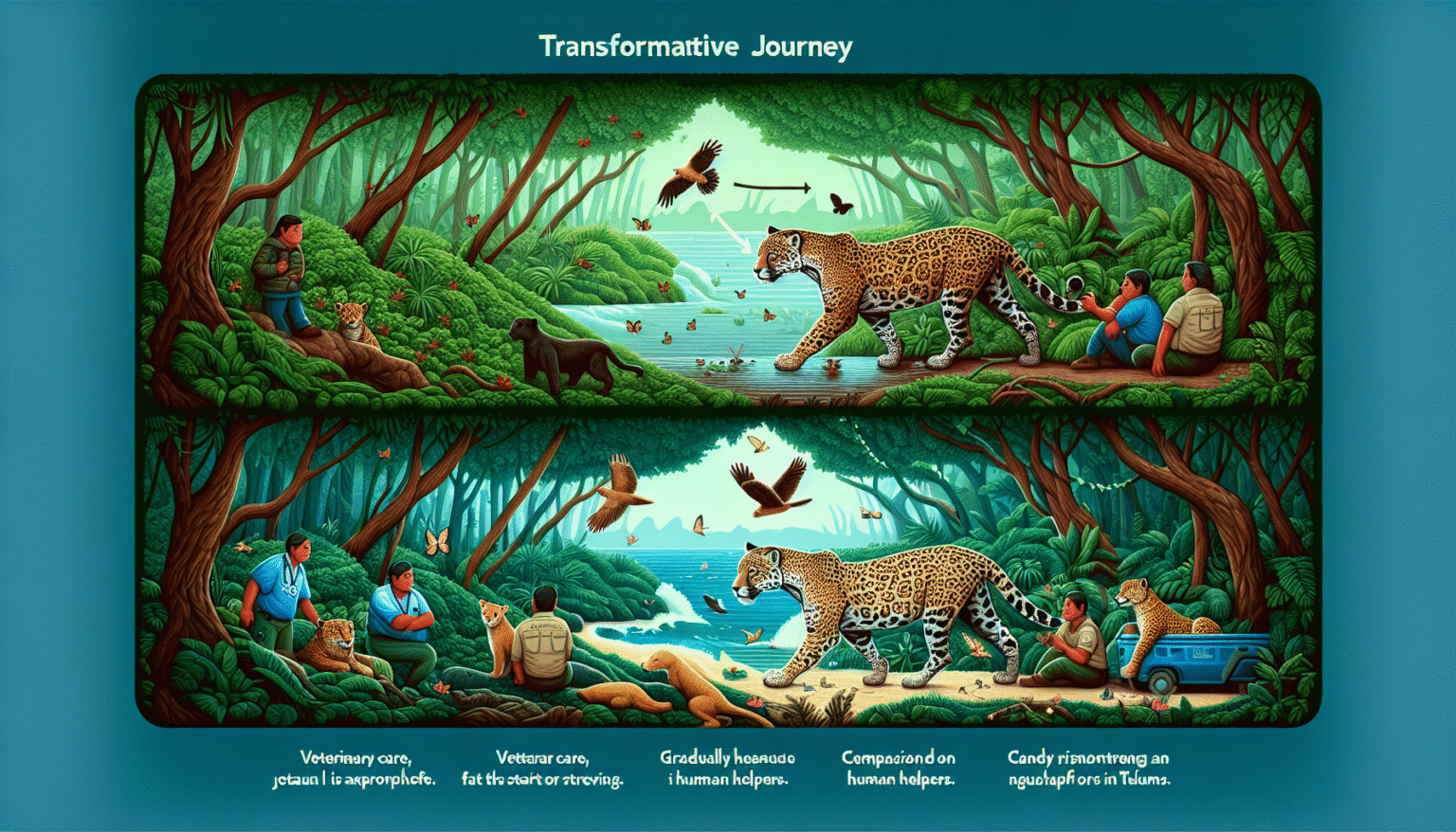The Transformative Journey of Tulum’s Injured Jaguars
Tulum, a magical corner of Mexico’s Yucatán Peninsula, is known for its pristine beaches, stunning ruins, and lush jungles. However, beneath its alluring beauty lies a vital narrative—the plight and rehabilitation of its injured jaguars. These majestic creatures are not only symbols of strength but also essential players in the ecosystem. The journey of Tulum’s injured jaguars encapsulates a movement towards wildlife conservation, rehabilitation, and community awareness.
The Symbolism of the Jaguar in Tulum
Historically, jaguars have held sacred significance in the region. They are often associated with strength, power, and the mystique of the ancient Maya civilization. Jaguars play a critical role in their ecosystems by managing prey populations and maintaining the balance of the environment. However, urbanization, poaching, and habitat loss have escalated threats to their existence.
The Causes of Injuries Among Jaguars
Injuries in jaguars can arise due to various factors. They often encounter conflicts with humans as they venture too close to urban areas, leading to car accidents or confrontations with livestock. Additionally, traps set for smaller game can inadvertently catch jaguars, leading to debilitating injuries. These incidents have prompted a greater need for intervention and rehabilitation within Tulum.
Rescue Initiatives in Tulum
Efforts to address the plight of injured jaguars have gained momentum in Tulum. The community has rallied together, fueled by local conservation organizations, to create rescue initiatives. Local wildlife rescue centers focus on various aspects of rehabilitating injured jaguars, ranging from medical treatment to long-term rehabilitation.
Organizations such as the Tulum Wildlife Rescue Center provide vital care to injured animals. The team consists of veterinarians, wildlife biologists, and dedicated volunteers who administer medical treatment. Injured jaguars typically undergo a thorough examination, where their injuries are assessed. Treatments can range from surgical interventions to therapies designed to restore physiological function.
The Rehabilitation Process
The rehabilitation process for injured jaguars is a meticulous journey that can span months, sometimes even years. After medical treatment, jaguars are often placed in large enclosures that mimic their natural habitats. These enclosures are essential for physical rehabilitation and behavioral adjustment; the goal is to help the animal learn how to hunt and adapt to the wild again.
Feeding schedules are meticulously arranged. Caretakers provide prey animals, simulating real-life hunting challenges. Enrichment activities, such as puzzles and climbing structures, also facilitate mental stimulation, ensuring that the jaguars remain active and engaged. These environments serve dual purposes – ensuring the physical recovery of the jaguars while preparing them for eventual release.
Community Involvement and Education
Community involvement has been integral to the success of the rescue initiatives. Efforts include educational programs aimed at locals and tourists that raise awareness about the plight of jaguars and the importance of biodiversity. These programs often include workshops, talks, and guided tours at the rehabilitation centers.
Local schools have partnered with wildlife experts to educate children about their region’s wildlife. Engaging the younger generation ensures that awareness and respect for wildlife continue. It fosters a new generation of guardians for the jaguars and other native wildlife, helping dispel myths and fears surrounding these animals.
The Release of Rehabilitated Jaguars
Once a jaguar has fully recovered, the momentous occasion of release back into the wild occurs. This process is handled with care, ensuring that the release site meets the natural habitat needs of the jaguar. The selected site typically includes dense rainforest and ample prey, allowing the jaguar to thrive sustainably.
Prior to release, each jaguar is monitored for behavioral signs, ensuring they possess the necessary skills for survival. Experts observe their reactions to potential prey and their ability to navigate the environment. GPS tracking collars may be fitted to monitor their movements post-release, providing essential data for future conservation efforts.
The Importance of Conservation Efforts
The journey of Tulum’s injured jaguars represents more than mere rehabilitation; it highlights a collective commitment to wildlife conservation. Through collaborative efforts with government agencies, local NGOs, and international wildlife organizations, Tulum is fostering a protective landscape for its wild inhabitants.
Long-term conservation strategies are essential. Habitat preservation, anti-poaching measures, and sustainable land use practices must accompany rehabilitation efforts. By working together, the community can mitigate human-jaguar conflicts and create a safer and healthier environment for these iconic animals.
Success Stories and Growing Awareness
Several success stories have emerged from Tulum’s jaguar rehabilitation initiatives. Rehabilitated jaguars have been successfully released back into the wild, becoming part of a larger population that contributes to the biodiversity of the region. Increased awareness about their plight has also spurred tourism focused on wildlife education and eco-tourism.
Wildlife enthusiasts and tourists visiting Tulum often support conservation efforts by participating in volunteer programs or donations. This wave of support not only aids in rehabilitation but also enhances local employment opportunities and strengthens conservation messaging across the region.
The Role of Technology in Conservation
In recent years, technology has played a vital role in conservation efforts. Camera traps, drones, and remote sensing provide critical data about jaguar populations, their behavior, and habitat usage. This data helps researchers formulate effective conservation strategies. Moreover, social media plays a powerful role in raising awareness, allowing stories of rehabilitated jaguars to reach global audiences and generate support.
Future Prospects for Tulum’s Jaguars
As the community continues to advocate for the protection of jaguars, potential future projects aim to expand rehabilitation capacity and foster collaborations across the Yucatán Peninsula. By integrating conservation efforts with community development, Tulum strives to ensure a healthier coexistence between humans and wildlife.
While the journey of the injured jaguars of Tulum is fraught with challenges, it also showcases resilience, hope, and profound dedication to preserving one of nature’s most enigmatic creatures. Through continued efforts, Tulum stands as a beacon of wildlife conservation, embodying the ideals of harmony between humanity and nature.







